MGMA Wrap-Up 10/27/11
MGMA11 is history and I’m happy to be home. My poor feet are swollen from extensive walking in non-sensible shoes and I’m more than a little sleep deprived. Other than those small complaints, it was a great convention I learned more than a few new things. A few final bits of news and impressions:
Official attendance, according to MGMA: more than 5,700, including 3,500 attendees and representatives from 399 exhibiting companies. Those numbers represent a 19% jump over 2010. MGMA is no HIMSS in terms of size, but it did seem busier than the last couple of years. I don’t know if there is an official explanation for the increase in attendance, but I’m sure it helps that Vegas hotels are affordable this time of year and flights are reasonably inexpensive. Practices are also facing a host of pressing issues, including Meaningful Use, looming deadlines for ICD-10 and 5010, evolving reimbursement models, and declining reimbursement. There was no shortage of sessions covering each of these topics.
During the meeting, MGMA and the American College of Medical Practice Executives (ACMPE) announced their official merger, effective January 1, 2012. MGMA is the much bigger organization, with 22,500 members, compared to ACMPE’s 6,750. The new MGMA-ACMPE is creating a unified board of directors. Both organizations will automatically transfer members into the new entity.
The most popular giveaway: the iPad2. MED3OOO awarded 100 iPads to attendees who were randomly selected to participate in short demos of Quippe and InteGreat EHR. Medicomp provided the Quippe overview and handled the live drawings. Needless to say, booth traffic was heavy for both companies.
Other seemingly hopping booths: athenahealth, Allscripts, Greenway, and Pulse. No coincidence that all have big booths and central locations.
I have a preference for booths that are very open, such as Sage’s and ZirMed’s. This photo of GE’s booth was taken from the main aisle. To “enter” the booth, you had to walk around to the other side. Granted there was an exhibit hall entrance near the other side, but it would seem the traffic was heavier on the less uninviting side.
I’ve said in the past that I like NextGen’s booth, which has cool lighting and these arches that go over the top of the booth. I didn’t take a picture this year and this photo was from a previous convention. Despite the eye-catching look, it’s a bit intimidating to have to walk into the booth to get a peek if you want to look over someone’s shoulder at a demo. NextGen, by the way, was promoting the fact its customers have submitted $8 million in Meaningful Use applications. I’m not sure if that was just ambulatory or if it also included inpatient.
The monorail that runs along the Strip was down at least part of the time during the convention. MGMA had provided attendees with monorail passes (in lieu of buses) to transport people from outlying hotels to the convention center. No monorail meant people had to pay $10 to $20 for cab rides, and taxi lines were often long. I am sure MGMA was not happy about the glitch.
McKesson had a smaller booth than in years past, while Cerner’s looked a bit bigger (though smaller than McKesson’s.) It seems to me that the size of the booth matters less than the location. As expected, the vendors with far outside booths spent a lot of time talking to each other rather than attendees. Or, more likely, looking at their phones and checking e-mail.
Some people don’t like Las Vegas, but I find it a great for people watching and I love the wide variety of food and and entertainment options. Next year MGMA heads to San Antonio, a less-flashy but still fun locale. Hopefully my feet will recover by then.








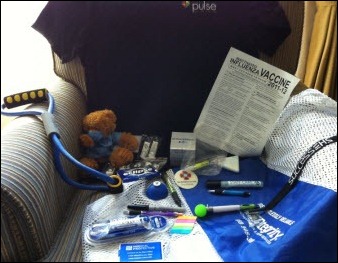

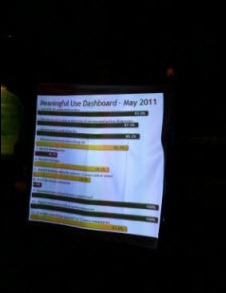




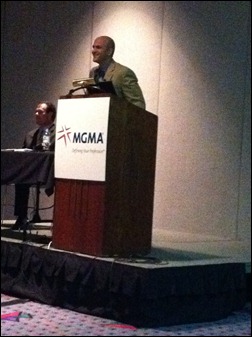


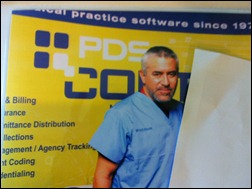

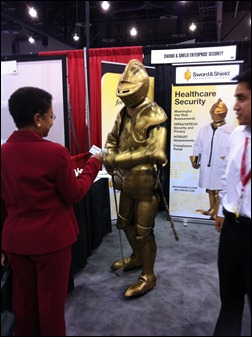






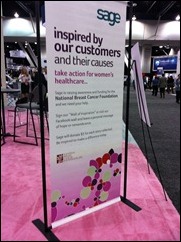







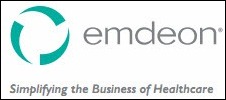

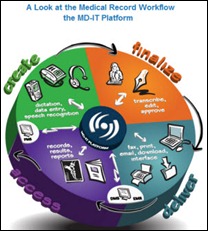
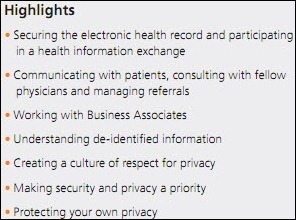




The article about Pediatric Associates in CA has a nugget with a potentially outsized impact: the implication that VFC vaccines…